Saudi Stock Exchange

The Saudi financial market has grown over the centuries in three main stages: The first phase from 1926 to 1984 began with the establishment of the Kingdom, the establishment of national joint stock companies and the spread of stock trading through unlicensed offices. Then the market moved to the second phase, which lasted from 1984 to 2003 in November 1984 with the implementation of the royal decree issued on April 24, 1983, which gave commercial banks the authority to buy or sell shares of national companies as well as the establishment of a commercial committee to supervise the activity of trading shares. Finally, the third phase from 2003 to 2020 The Capital Market Law was established through the issuance of the Capital Market Law by issuing a special system in it and establishing a Capital Market Authority and Transfer Capital Market Supervision and Regulation to it. We will discuss in detail the developments of the Saudi capital market in its management, issuance of its tools and the most important IPOs in it and some of the crises he went through according to the three periods mentioned above:
- The first phase (the emergence of the stock market 1926-1984):
Markets in Arabia have been pre-Islamic since the pre-Islamic era and have continued to evolve and diversify over the years. At the beginning of the Saudi era, the regions of the Kingdom witnessed an urban renaissance, with which markets developed and diversified, and the commercial movement was active and expanded, which created the need to increase capital through the participation of traders together in establishing companies, so the idea of companies emerged. Contribution and participation of a large number of merchants of the Kingdom. Joint stock companies were not limited only; the idea of shareholding also included individuals and merchants. After the unification of the Kingdom, King Abdul Aziz immediately began to make the necessary arrangements for the establishment of a joint stock national oil company. This illustrates the founding king's interest in the thought of contribution from the very beginning.
In 1926, the Saudi National Shareholding Company for Automobile Traffic was established
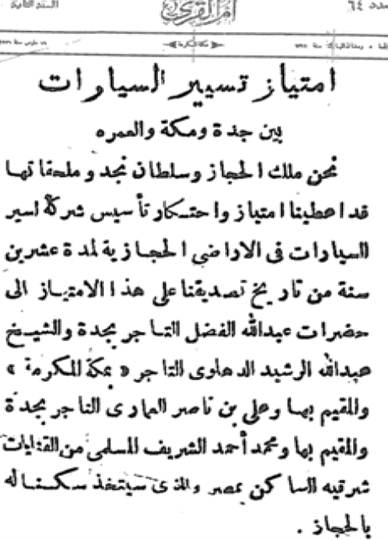
It was the first company to subscribe to the market and obtained the concession to operate cars between Jeddah and Mecca for twenty years. Half of it was offered for subscription among citizens and the National Company for Automobile Traffic originated in the thought of shareholding, and the text of the concession included contemporary concepts and applications such as disclosure, public disclosure, public subscription, and reference to the composition of the company's board of directors’ by-election.
In 1931, the Commercial Law was promulgated
Which is concerned with the registration of commercial companies that actually exist Three types of companies have been identified by the system, namely: Negotiation Company, Al-Anan Company, Mudaraba Company The electric sector participated in the thought of contributing and the state encouraged the private sector to establish a joint stock electricity company, 1933 MuhammadAbdullah Reda Ibrahim Shaker founded the Jeddah Electricity Company and in 1935 the Taif Electricity Company was established by Ibrahim Al-Juffali and his brothers and Sheikh Abdul Aziz Al-Khereiji established the Saudi Electricity Generating Company in Medina in 1947.
In 1957
The banking sector participated in the contribution and development of the Saudi stock market. Riyad Bank was established, and the bank's contribution was capital of 50 million riyals. It was the first national bank to offer shares in the Kingdom, and this matter drew the attention of citizens to the primary stock market and spread the concept of participation in the IPO.
In the period 1996-1981
Electricity companies were integrated, which was one of the most important commas captured in the development of the Saudi stock market.
1975-1983
Saudization of branches of foreign banks in which Saudi capital contributes at least 60% and foreign capital participates by no more than 40% Until 1983, the stock market was limited to national private shareholding companies and state-owned companies were not part of this market.
In 1984
the subscription to the shares of SABIC began, and the number of subscribers reached more than 300 thousand subscribers, which led to the decision of the Board of Directors to increase the percentage of shares offered to 30%.
- The second phase (regulating the stock market 1984-2003):
Started in 1983
issued an order to regulate the trading of shares through local banks. It was started in 1984 and included the restriction of trading from commercial banks with their commitment to open trading centers in their main facilities.
The first steps of regulations and legislation related to the stock market began to appear, but they were not at the required level for investors from the inability to access market information Was the Stock Control Department established in the Saudi Arabian Monetary Agency in 1985, despite its great executive role, it had a limited legislative role that proposes regulations that govern the daily market movement.
There were some of the instrument's tasks in stock control:
1- Receiving the complaint
2- Publishing stock prices in local newspapers
3- Setting and publishing daily opening and closing prices
The Saudi Company for Registering Shares was established with the participation of Saudi banks under the supervision of the Saudi Arabian Monetary Agency at that time.
There were some of the tasks of the Saudi Stock Registration Company:
1- Corporate Records Management
2-Complete Process Reconciliation
3- Completion of share ownership transfers and registration
In 1985
the National Center for Financial and Economic Information issued the general index of local stocks weekly. The Standing Committee for Supervision proposed to the Ministerial Committee that the shares be traded through a unified central hall to facilitate trading, which was started in 1987, but did not continue for several reasons, including high cost and inefficient trading, as well as the world's orientation to automated trading systems.
In 1990,
the Saudi Stock Information Automated System was introduced, making the Saudi stock market the first electronic stock market in the region. Emerging Markets Traders can now obtain information on stock prices through the trading system screen during trading time.
In 1993,
banks began to establish local equity funds.
In 1997,
Gulf nationals were allowed to own shares of Saudi companies.
In 1999,
non-Saudis residing and non-residents in the Kingdom were allowed to invest in local equity investment funds managed by Saudi commercial banks.
In 2002,
Tadawul website was launched. The IPO of the Saudi Telecom Company was an important step in the second phase as it moved the Saudi market to a great qualitative leap. The Council of Ministers' decision to offer 30% of the shares of Saudi Telecom Company The IPO process ended in 2003 and the size of the subscription in the company's shares did not exceed 36 billion and is the largest IPO for the Kingdom of Saudi Arabia in 20 years:

- The third stage (Capital Market System 2003-2020):
Capital Market Law After two decades, during that, the Ministerial Committee, the Standing Committee for Supervision, and the Saudi Arabian Monetary Agency have made clear efforts to supervise and develop the Saudi stock market, since assigning banks to aspire to brokerage tasks in stock trading from the beginning until the early years of the beginning of the new millennium. On July 31, 2003, a Royal Decree was issued approving the issuance of the Capital Market Law and the establishment of the Capital Market Authority, which included the adoption of provisions for the capital market that ensure its stability and not leave a legal vacuum, in order to create an organized and fair market.
Formation of the Board of the Authority
In July 2004, a Royal Decree was issued to form the Board of the Capital Market Authority (CMA) of five carefully selected members, namely His Excellency Mr. Jammaz Al-Suhaimi as Chairman of the CMA Board, and Mr. Ibrahim Al-Rumaih as Vice Chairman, in addition to the membership of Mr. Muhammad Al-Shamrani, Dr. Abdul Rahman Abdul Khalaf and Dr. Abdullah Al-Abdulqader, and the Board began to practice immediately, and the issuance of the Securities Offering Regulations and the Rules of Registration and Listing.
Listing joint stock companies Inaugurated by Etihad Etisalat Company (Mobily), the subscription process began on October 16, 2004 with the offering of 20% of the total ordinary shares with a capital of five billion Saudi riyals, distributed over 100 million shares with a nominal value of 50 riyals per share, followed by the second offering to start the subscription process of Tawuniya Insurance Company on December 21, 2004 and represent 70 % of the company's capital shares 500 million riyals and the issue price was set at 205 riyals (50 nominal value + 155 riyals premium issuance). The third offering was the largest since the House of Rules of Bank Albiladbecause the Authority offered 50% of its shares for public subscription from the beginning of work on Monday, February 21, 2005, and the number of shares 30 million shares with a capital of 3000 million riyals with a nominal value of 50 riyals per share, according to the Companies Law and the Capital Market Law, and the journey of establishing a joint stock company until its listing in the market includes ten steps that we explain in the figure:
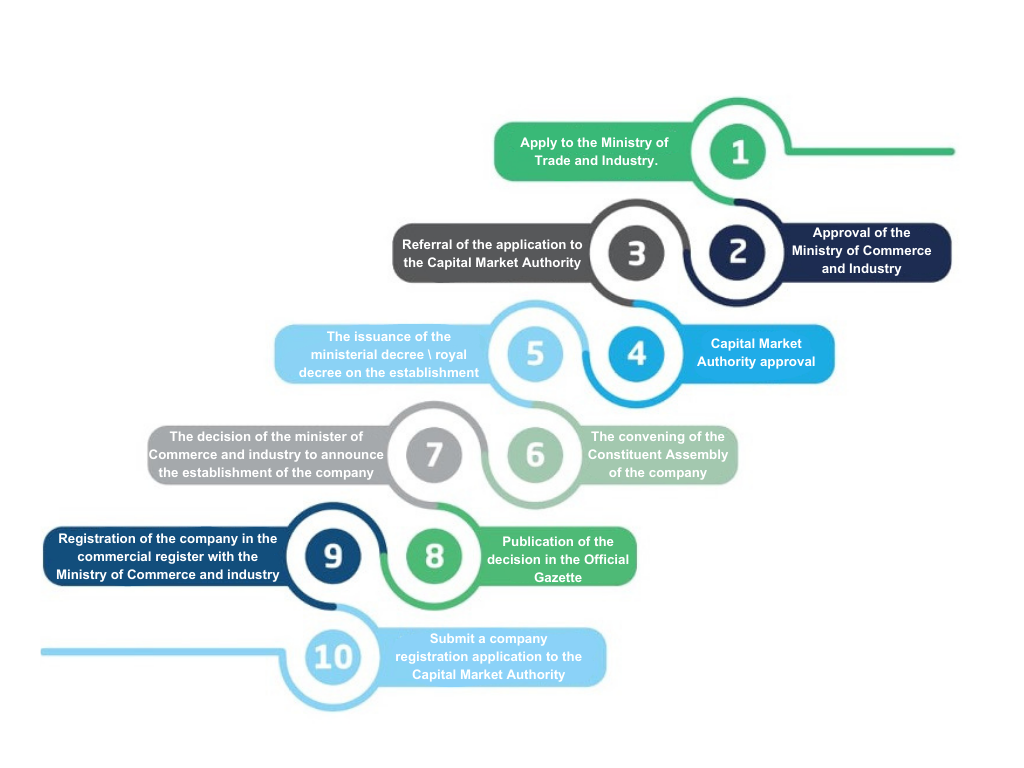
Corporate Governance
The Board of the Capital Market Authority was keen to protect the rights of investors and stakeholders and to achieve justice, competitiveness and transparency in the market and the business environment by setting the Corporate Governance Regulations, and the Regulations were issued on November 12, 2006, and the regulations include the Authority's authority to regulate and monitor the full disclosure of information related to securities and their issuers, dealing with insiders, major investors and shareholders, and identifying and providing complete information.
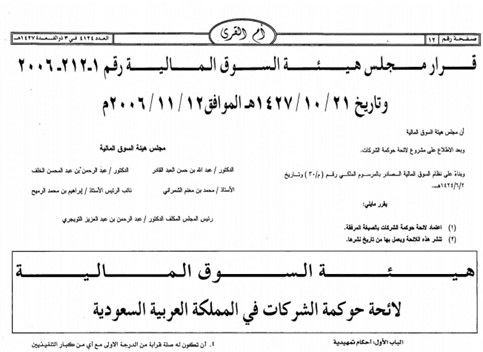
Stock Market Bubble 2006
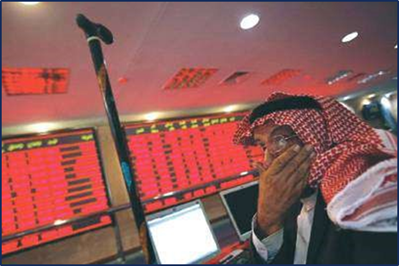
The bubble witnessed by the Saudi stock market in 2006 was only a link in a series of bubbles, which the world witnessed and the bubble of financial stock Bubble Market Stock is one of the types of financial bubbles that occur in the stock markets, as they accept to buy shares at prices that exceed their real value, and link the history of the emergence of bubbles speculation on the shares of the British company "South Sea" in the early eighteenth century, which was the famous mathematician "Isaac" Newton is one of its most prominent victims, as well as the American stock bubble before the Wall Street crash in 1929 and the Great Depression, to the Internet bubble in 2000, and the real estate debt bubble in 2008, which was known as the global financial crisis. In February 2006, the Saudi capital market witnessed the most violent crisis it went through, and the Authority passed its first test in an event that the Saudi market had never seen in its history before, as a result of which the stock market fell sharply, and the stock price index lost a thousand points in one day, and the total losses amounted to about two trillion riyals. Among the most prominent reasons for the occurrence of the stock bubble: The high volume of liquidity in Saudi banks and the facilitation of lending to citizens wishing to enter the stock market, the weak investment culture and the absence of institutional investors, sellers of illusions in Internet forums, which were a fertile environment for rumors, manipulation of stock prices and making false recommendations. During the bubble confrontation, a set of measures were taken to limit the rapid rise in stock prices, including, the issuance of a decision to amend the unit of price change in the market from 0.25 to 1 riyal, the issuance of a decision to reduce the daily fluctuation in the share prices of all listed companies in the market to 5% instead of 10. Blocking websites and forums that work on recommendations through unlicensed websites urged investors to ensure the regularity of the providers of advice in the securities business. After that, the trend towards greater market control and regulation was characterized.
Issuance of debt instruments
The financial market has tended to regulate issuing and trading debt instruments (sukuk and bonds) to make tradable debt instruments issued by companies, the government, or public bodies. A cautious start began in 2006 when the Saudi Basic Industries Corporation (SABIC) issued and offered three billion riyals worth of sukuk which was limited to Saudi institutional investors.
Regulating and regulating capital market institutions
After the plant was planted by issuing the Capital Market Law, and its roots were proven by the establishment of the Capital Market Authority and the formation of its first board, and it was irrigated by the efforts of the Authority's team, which was based on creating the legislative, regulatory, and administrative environment. The CMA started implementing one of the latest monitoring systems SMART on November 17, 2007, as followed in the international markets, and this system is one of the auxiliary tools to monitor and analyze trading in the Saudi capital market and prove any actions that may involve manipulation of any security. One of the most prominent cases, in which the Authority has taken decisive measures towards it, is the crisis of Etihad Etisalat Mobily resulting from accounting errors that cost the company a net loss of more than two billion riyals, in the fourth quarter of 2014.
The technical development of the financial market
Financial technology is a new financial industry that uses technical applications to improve financial products and services, and the Authority supported this field and was keen to develop it, the journey of technical development in the financial market began early with the launch of the ESIS system in 1990 and it was the first generation, then the second generation came with the launch of the new Tadawul system in 2001 and with the establishment of the Capital Market Authority and the increase in demand for the stock market and the trend towards diversification of financial products, the capital market moved to the next two generations of technology development, namely SAXES AND X-STREAM INET SYSTEMS, THE AUTHORITY WAS KEEN TO DEVELOP CLEARING AND SETTLEMENT SYSTEMS TECHNICALLY AS WELL AS ELECTRONIC TRADING IN PREPARATION FOR THE ESTABLISHMENT OF THE SAUDI STOCK EXCHANGE TADAWUL COMPANY.
Capital Market (Tadawul)
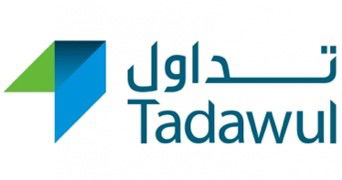
Tadawul in the past was only an electronic platform for trading and does not have an independent legal entity, as it moves from an electronic system to a company, and the Council of Ministers approved on March 19, 2007, the license to establish the Saudi Stock Exchange Company Tadawul is a joint stock company that enjoys legal personality and independent financial disclosure and Tadawul worked with the Authority in order to regulate and develop the capital market, by structuring the market sectors to reflect the real disease and the main activities of companies and the capital market.
Diversification of financial products
The only conventional shares in the Saudi capital market continued throughout the first phase of its development, and during the second phase, investment funds appeared alongside stocks and included a new definition of securities that fall under the system, which include shares, debt instruments, investment fund units and other financial instruments that the CMA Board deems appropriate, so the goal of diversifying financial products and providing new investment means and financing channels came at the forefront of the objectives of the capital market during the third phase of the history of the capital market. This was stated in the Sukuk and bonds market, where the Board of the Capital Market Authority approved its establishment on June 6, 2009, providing all direct automated services related to its trading, allowing local banks to establish investment funds under the supervision of the Saudi Central Bank, in addition to amending the controls of real estate contributions, suspending work in the activity of real estate contributions and requiring it to be an investment fund, regulating the offering of real estate investment traded funds (REIT), and (Tadawul) developed indices. Global in preparation for the establishment of the derivatives market.
Opening the foreign investment market
During the development of the Saudi capital market, the journey of foreign investment in the Saudi capital market continued, following the sharp decline in the stock market in 2006, the Economic Council held a session after which a statement was issued to allow non-Saudi residents to invest directly in the stock market.
Offering and listing companies in the parallel market
The vision of the goal of supporting entrepreneurship included raising the contribution of small and medium enterprises to achieve this, the Financial Entrepreneurship Program issued by the Capital Market Authority adopted the initiative to establish a parallel capital market with the aim of providing financing means for small and medium enterprises and improving governance and disclosure levels, on December 21, 2016. m, The Board of the Capital Market Authority approved the Rules of Registration and Listing in the Parallel Market and amended the Regulations on the Offering of Securities to include provisions related to the offering of shares for the purpose of listing them in the Parallel Market. The Saudi Stock Exchange (Tadawul) launched Nomu Parallel Market on February 26, 2017, and trading in shares listed on the Nomu Parallel Market is limited to the categories of "Qualified Investors".
Listing and Listing of Saudi Aramco
After the establishment of the Supreme Council of Aramco under the chairmanship of Crown Prince Mohammed bin Salman in 2015, the Saudi Council of Ministers issued a decision on December 20, 2017approving that Saudi Aramco will be a joint stock company with a capital of 60 billion riyals divided into 200 One billion shares with no face value per share. The Board of Directors has granted the authority to issue, list or offer shares inside or outside the Kingdom of Saudi Arabia. The figure shows a comparison of financial market statistics in 2019 before and after the Aramco IPO:
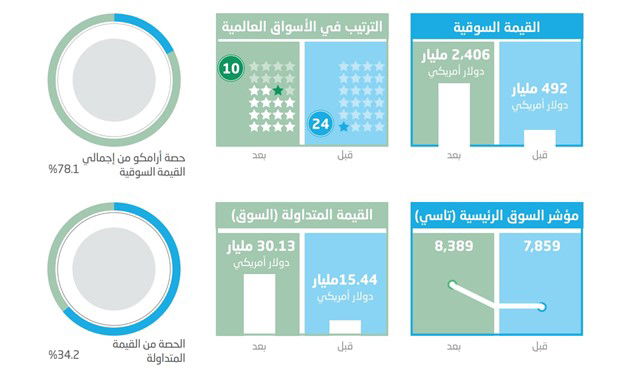
Derivatives Market Launch
On August 30, 2020, the Saudi Stock Exchange launched the derivatives market and began trading futures contracts the index was developed from the trading of "MT30”, and the contracts were the first derivatives product to be traded in the Saudi stock market, and Tadawul is expected to launch additional products in the derivatives market by the end of 2020, the traded value of derivatives contracts reached 364.5 thousand riyals.
Raising the capabilities of workers in the financial sector
Through the launch of a series of specialized qualification exams in the field of securities such as the General Certificate of Dealing in Securities CME-1, the Certificate of Conformity, Compliance, Anti-Money Laundering and Combating the Financing of Terrorism (CME-2) and the CME-3 Stockbrokers Certificate. In addition to qualifying outstanding graduates with a program to contribute to supporting employment opportunities for Saudi fresh graduates in the capital market sector and raising the Saudization rate in this sector to meet the needs of the securities sector of qualified human competencies and its non-growth and the establishment of the Financial Academy that helps to qualify competencies in this sector, and the following figure shows the most important developments of the Academy since the establishment of the Institute until 2020:
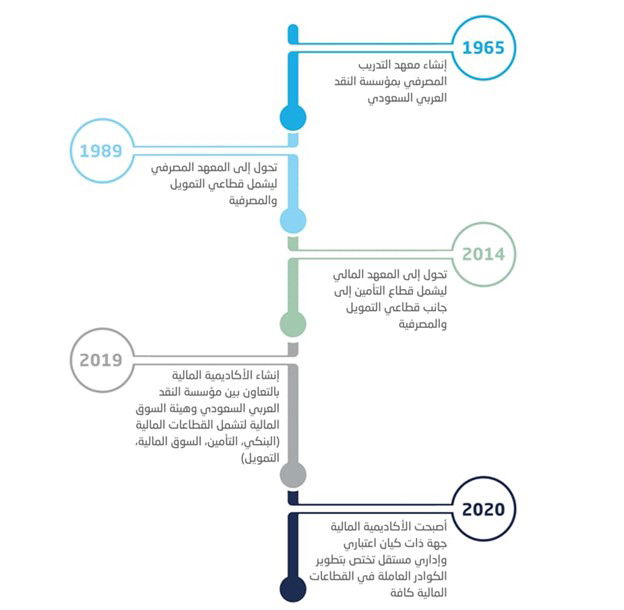
The largest IPOs in the Saudi market 2006-2020
Aramco, National Commercial Bank, Alinma Bank, Saudi Telecom, Ma'aden, Kayan, Zain KSA, Dar Al Arkan, Kingdom Holding:
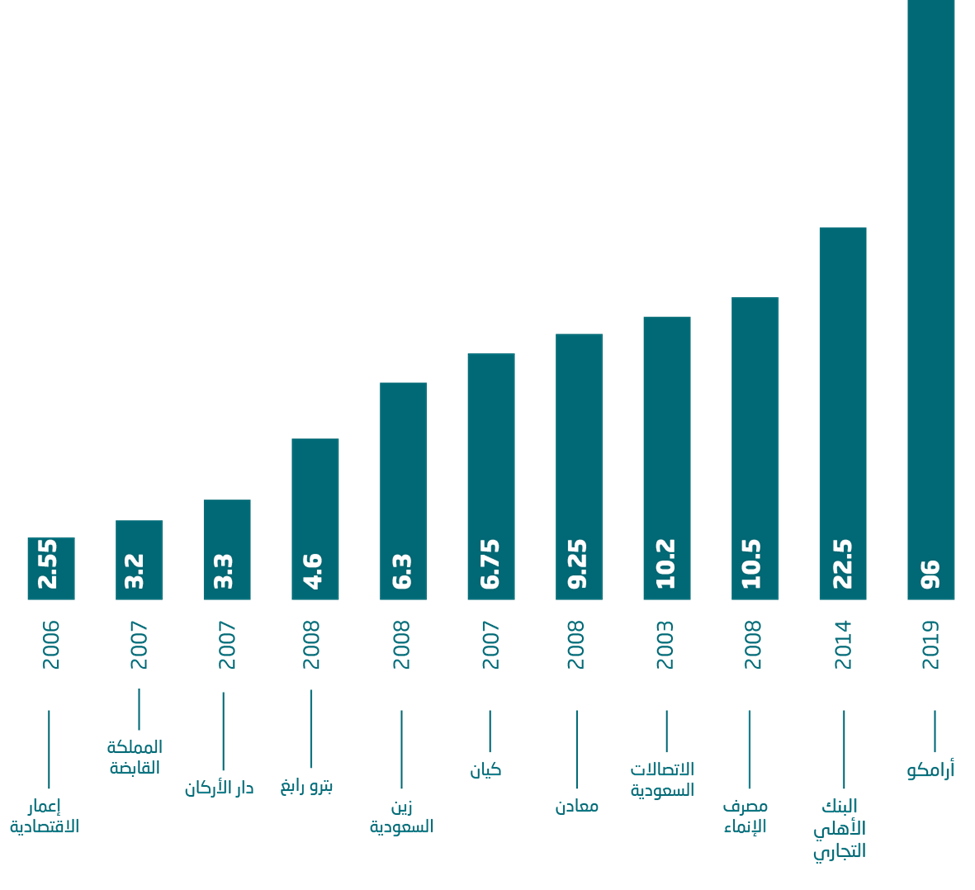
The Saudi capital market in the period of the Coronavirus and beyond
The most important financial results indicated that most companies were negatively affected by the Coronavirus epidemic, and the Saudi stock market index reached its lowest level since 2016, falling below the level of 6,000 points during the month of March 2020, and continuous losses were achieved with the start of the Corona pandemic and the measures taken at the time to limit its repercussions, the Saudi Capital Market Authority took the necessary measures to reduce the virus and avoid further losses, and the Saudi market index witnessed a gradual rise during the post-virus period, coinciding with the support that The state provided it to various sectors to reduce the effects of the pandemic, achieving an increase of 112% compared to its closure at the bottom of March 16, 2020.
Financial leadership within the framework of the Kingdom's Vision 2030
One of the main axes of the vision is (a prosperous economy) directly linked to the Saudi financial sector, relying on the Kingdom's huge investment strengths and capabilities and strategic geographical location, and the vision included broad plans, including economic, social and development programs aimed at preparing the Kingdom for the post-oil phase, and to achieve a prosperous economy axis, the Council of Economic and Development Affairs launched the "Financial Sector Development" program aimed at developing a thriving financial sector through the development and deepening of financial sector institutions and the development of the Saudi capital market, its pillars were The three strategies in:
- Enabling financial institutions to support private sector growth.
- Advanced Capital Market Development
- Enhance and enable financial planning.
In an implementation of the Financial Sector Development Program, the CMA launched the Capital Market Strategic Plan under the title "Financial Leadership", which is based on four main axes: facilitating financing, stimulating investment, enhancing confidence, and building capabilities. One of the most important objectives of the Saudi capital market was to join the global market indices in a desire to open up to new global markets, and the Saudi market succeeded in joining several international indices after achieving a set of fundamental developments over the years that qualified it to join these indices.
The following figure shows the monitoring of the most important events affecting the performance of the general index of the Saudi stock market (TASI) since 1994:
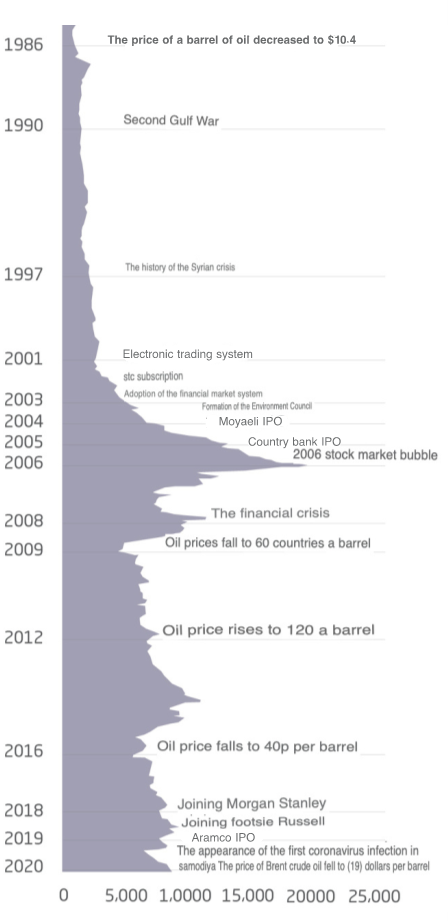
Resource
- https://ebook.cma.org.sa/EbookWeb/#/reader
- https://ebook.cma.org.sa/imagebook/#/reader
- https://www.argaam.com/ar/article/articledetail/id/1543962
Prepared by:
Munirah Waleed Alsalem
Lujain Imad alrasheed
Hessah Alzamil